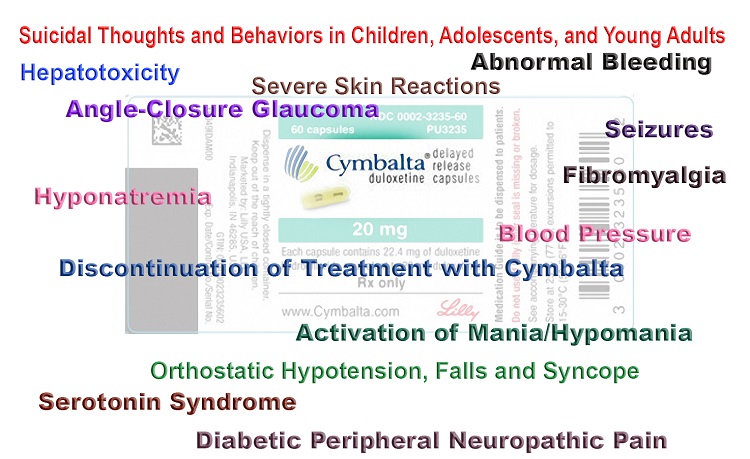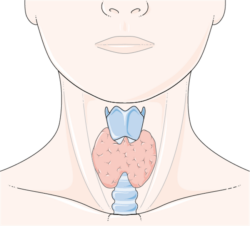Waning Fertility
I have always wanted to be a mother. Growing up around my grandmother’s day care, I relished taking on nurturing roles from a young age. I have always enjoyed spending time with children, reading to my younger cousins, and making up games for us play. I even earned my degree as an Early Childhood Educator, and have dreams of someday writing children’s books. My decision to work as a nanny while I finish my graduate degree has changed my outlook on my career goals, and I now hope to open my own preschool in the future. Caring for children has always come naturally to me, and has become my passion. At the age of 28, I am now four years past my peak fertility, according to several reproductive endocrinologists I have seen. Even though I am young, in the area of reproductive medicine, I have already lost the most fertile years of my life. This comes as no surprise to me. Knowing I have endometriosis, I expected that I would have trouble getting pregnant. I never expected how intense my road toward baby would be.
Endometriosis and Fertility
My husband and I were already together when I was first given my tentative diagnosis of endometriosis at the age of 22. In the same breath, my doctor assured me that she would get me pregnant, “even if we have to do in-vitro fertilization (IVF)!” I nearly fainted. Right then and there. I had barely graduated from college, and was still years away from starting a family! My fertility loomed over my relationship with my husband for nearly 5 years before it became a tangible part of our life together. My first laparoscopic surgeon informed us at my post-operative appointment that after trying birth control pills, progesterone, Lupron, and surgery to manage my then-stage III endometriosis, I was out of options and needed to get pregnant immediately.
My husband and I were given the choice to start trying for a baby, or go back on suppressive therapy, meant to eliminate estrogen and stall the growth of the disease. Pregnancy and breast feeding can offer a period of relief from endometriosis pain, since the body does not menstruate. For me, suppressive therapy options were Lupron or Mirena, both invasive and potentially dangerous treatments. I did not want to go back on easier methods, including progesterone pills, which my body could not tolerate. I had already tried progesterone for four years, and had suffered medical and emotional side effects. There was no easy choice.
I had wanted to start a family for years, but my husband and I were not in a place financially or otherwise to get pregnant, so we chose to go with Lupron while we got our ducks in a row, and told our families. Unlike my first experience with Lupron injections, this time, the Lupron did not help; I was still in excruciating pain during my period, and I even lost some hair and bone density. With our options at an end three months later, we started trying to conceive.
Although I was excited about becoming a mother, the following months were some of the most stressful of my life. With the looming return of my disease while being “untreated,” the immediacy of our need to conceive was overwhelming. When most couples decide to start a family, there might be a period of excitement, some adjustment, and taking the process slowly, while hoping that a positive pregnancy test (or Big Fat Positive to us online groupies) might happen easily. I jumped straight into charting my basal body temperature, cervical mucus, and peeing on sticks to see if my luteinizing hormone had triggered ovulation. I bought a stack of pregnancy books, and a few hard-to-come-by infertility books. So much for romance! I soon began using an app on my smart phone to track all the data for me, which sent me into an obsession with checking my chart every hour (for no reason whatsoever), in the hopes that today might be the day my precious egg would pop. But it never did.
Trying to Conceive: The Complications
Two months into my trying to conceive (TTC) journey, my obgyn suggested a reproductive endocrinologist. Most women get 6 months to a year before seeing a fertility specialist, but my doctor wanted me on the fast track. We were using a pregnancy as a treatment, a chunk of time without period pain, so we had no time to delay. One late evening visit later to a specialist at Brigham & Women’s, I was diagnosed with an anovulatory cycle (no ovulation), and given 5 days worth of the fertility drug Clomid to begin taking once my next period arrived. Five days after my 28th birthday, I started my first fertility treatment.
Unfortunately for me, the RE who prescribed these drugs did not monitor my hormone levels or the size of my follicles. I was told how to time intercourse, and to call the office when I got a positive pregnancy test or started my period. I ended up developing right side abdominal pain, something I was fairly accustomed to, and which the resident in my RE’s office found to be a nearly 5cm complex cyst. To my dismay, the RE could not fit me into her schedule for over a month. I was left to wait and see what happened. When my next period arrived (no BFP for me), so did the most intense pain and bleeding I had ever experienced. After nearly fainting from the blood loss, and doubling over in pain, a trip to the ER confirmed that the cyst had ruptured. The nurse at my RE’s office suggested taking a month off of fertility drugs to heal, then starting up again, but could not fit me in for an appointment for several more weeks.
I was shocked by how unimportant I seemed to this doctor. Why didn’t she feel like a ruptured endometrioma might warrant squeezing me into her schedule? Wasn’t my advanced disease serious enough? I guess she figured that was my obgyn’s job, but she had prescribed the fertility drugs that sent my hormone levels soaring, likely causing a flare in my endometriosis. Did she not feel she was somewhat responsible for my care? I felt abandoned. I never went back to that RE.
I decided to take that month, and do some research of my own. My obgyn suggested IVF when I saw her to follow up about the cyst. It was all happening too fast! I had always wanted to avoid IVF, which I found too invasive and highly taxing. Not to mention I was in my last semester of graduate school, and doing an internship. At this point, my husband and I had only been trying for four months. Most couples get three times that amount of time before considering daily injections, multiple embryos, and possibly life-threatening complications. Tears rolled down my face as I read books about other women’s experiences with IVF, and spoke to others like me on fertility forums about the process. I was not ready for this.
Excision Surgery
I began researching endometriosis and excision surgery, a technique few gynecological surgeons can perform adequately. It involves cutting the endometriosis out like a cancer to ensure that all of the disease is completely removed. After immersing myself in endometriosis literature and surgical sites, I considered several excision specialists from all over the US. Eventually, I found a plan that would work for me, and a doctor I felt I could trust.
I flew to St. Louis in June to have an excision surgery, despite obvious contention from my obgyn and the IVF specialist she recommended in her practice. They could not understand why I would fly halfway across the country when there were plenty of doctors here. My obgyn’s argument was that my first surgery had complications, and my recovery period was long. However, my gut told me that I had made the right choice. In the end, my surgeon found that my disease had progressed rapidly in the 11 months since my first surgery, far beyond anyone’s expectations. Besides the involvement of my bladder, bowel, ureters, rectum, appendix, and pelvic lining, the disease had ravaged my reproductive organs. Both of my ovaries had endometriomas, were being pulled behind my uterus, and attached to the back of my pelvis. My left fallopian tube was kinked shut. Adhesions, sticky bands of scar tissue, had distorted my anatomy to the point where nearly all of my pelvic organs were stuck together. My surgeon worked for six hours, even reconstructing my ovaries to avoid leaving raw tissue exposed and vulnerable to more damage. At my post-operative appointment, we discussed my options for fertility, and made a plan.
Road to Baby – Back on Track
Now, 10 months after starting on the Road to Baby, we are trying on our own naturally, without the help of fertility drugs. My first and only experience with pumping my body full of hormones was enough to turn me off of it completely! For me, the experience caused real damage to my body, and I am not eager to do it again. It feels like we are starting over, with a fresh canvas. We found a local fertility specialist who comes recommended by endometriosis patients like me who believe excision is the answer to this disease. He seems on board with our decision to wait a little longer before considering drastic measures. IVF may still be an option for us if we continue to struggle, or if there is any male factor infertility, something none of my previous doctors even bothered to test for. But for now, no one is pressuring us to jump in a race car and speed toward the finish line. We have time to take in the scenery and enjoy the ride together.
And that’s exactly how it should have been all along.
About the Author: Kelsey is an Early Childhood Educator and blogger from the Boston area. She chronicles her journey using sewing as a positive outlet while living with chronic pain and Stage IV Endometriosis. Diagnosed at 22, Kelsey has spent six years learning about her disease, and has recently become active in Endometriosis research and advocacy. She is a published poet who dreams of writing children’s books, and opening her own preschool that supports reading development. To read more about Kelsey’s daily dabblings in sewing, as well as recipes, preschool curriculum ideas, and information about endometriosis, visit her blog at www.silverrosewing.blogspot.com













Relationship or marriage problem and infertility problem and herpes cure too, all kinds of problem you find difficult to resolve and he will put a lasting solution to it. Here his email ( robinsonbucler @gmail.) com, Thank you!!!!!!!!!!!!!???
Personally, I got tired of trying so many different things against Endometriosis. I was lost, nothing
seemed to help. That was until someone recommended me to use PeaPlex. I have read different reviews on the effect of PeaPlex, some very positive, some less. But for me personally, it really gives relieve. I would very much recommend it.
I was married at 32 and immediately tried to get pregnant. When I was unable to conceive I had blood tests for fertility and was told that I had an FSH (follicle stimulating hormone) of 54 and would not be able to have children. Even though the doctors knew that I had been diagnosed with Hashimoto’s thyroiditis since age 25, no one bothered to check my thyroid levels. my TSH was measured at .001. My Synthroid dosage was lowered. a friend advise me to contact a spiritualist who help with fertility with her medicine, i collected her contact an explain my situation to her she prepared for me a herbal medicine which i took as describe I by her. became pregnant very quickly, I had a successful pregnancy. I have my baby august 2014. to get pregnant at age 35 with my 2nd child in september 2016, thank you mama , this is her email contact if you require her help nativeiyabasira@yahoo.com
I had endometriosis for 18 years and i never thought i would ever get a cure due to the terrible symptoms i had and this made it impossible for me to get pregnant even after 12 years of marriage and it was a serious issue. I got to know about Dr. Aleta who treated someone and the person shared a story of how she got a cure and let her contact details, i contacted Dr. Aleta and she actually confirmed it and i decided to give a try too and use her herbal medicine that was how my burden ended completely. My son will be 2 this december and i am grateful to God and thankful to her for medicine too. If you have (Endometriosis, PCOS, Fibroid, Ovarian cyst, Ectopic Pregnancy or any infertility issues) just reach her on (aletedwin @ gmail. com) she has professional advise and a cure too.
Hi Layla – I see you’re going around the internet today pasting this exact same text into comments on various blog posts – are you by any chance being compensated to do this or encouraged to do it by anyone else?
And who is this “Dr. Aleta” who seems to exist nowhere but in blog posts? No address, no evidence of credentials anywhere?
Can you message me where you went in St Louis for your surgery and who did yours? I’m in the same boat and not sure what to do
What a roller coaster ride you’ve been on. It’s incredible to see how hormone imbalances can really exhaust someone and spread them so thin. I’d love to hear of any follow up on this. Have you and your husband found success at all or looked into other options? Very inspiring and I look forward to a round 2 of this piece.